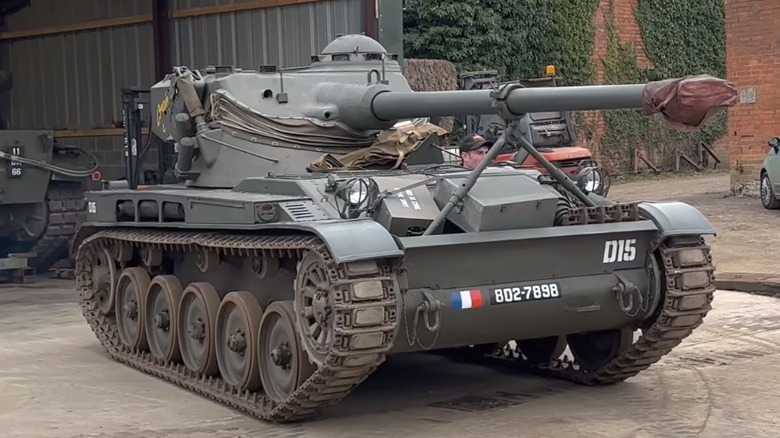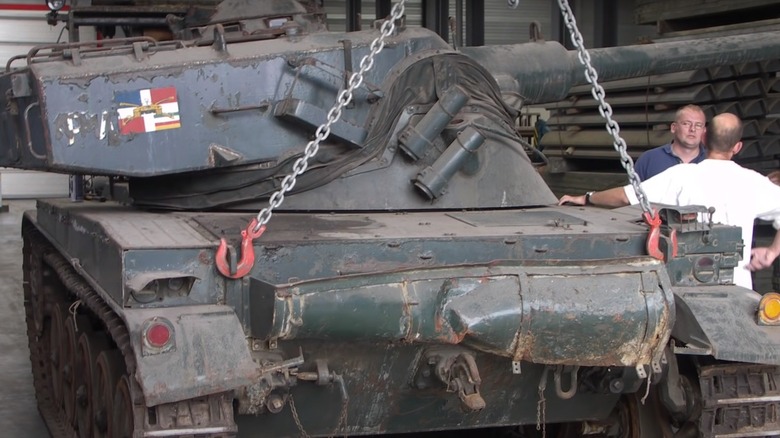
LeStudio/Shutterstock
Tank design involves creating a unit with the ideal mix of potent weapon systems and maneuverability, according to Tank-AFV. The AMX-13 Light Tank struck an outstanding balance between these as it launched just after World War II and is still active worldwide today. Though the French Armed Forces initially used it, it became widely popular in dozens of other countries and still operates in a dozen or so locales around the globe. Its small crew requirements, lightweight design, and customizable components have made it a lasting figure on the battlefield, like a select few of the most impressive tanks of all time.
According to Military Today, this tank included a 250-horsepower engine, a minimal offering of steel plate armor, and could reach a top speed of 37 mph with a range of just under 250 miles. Due to its sub-30-ton weight, this French tank could be transported by air and dropped into areas difficult to reach from the ground. Therefore, the AMX-13 would routinely support airborne soldiers by providing valuable firepower at the drop zone and beyond.
Why is the AMX-13 so popular?

Mr Hewes/YouTube
Not only does the AMX-13 offer excellent mobility, but it’s also very modular, allowing different armed forces to customize the tank to their needs. Several components of the AMX-13 can be swapped out, such as the turret, secondary weapons, autoloaders, and fire control system. Some military forces still using the AMX-13 have even changed out the engine for a better-performing diesel variant. Does the operation require machine gun support or guided missiles? Does the tank need to be quick, or should exterior armor be increased for enhanced protection at the cost of speed? AMX-13 can quickly be adjusted to suit the needs of the operation.
Another advantage of the AMX-13 is the smaller crew of three soldiers instead of the four required for larger tanks. Compact tanks smaller than the AMX-13 also feature fewer crew members, such as Germany’s tiny but powerful tank, the Wiesel AWC. With a smaller crew, the tank didn’t need to be as large to accommodate another member. In addition, common sense dictates that a smaller target is more difficult to hit directly and may be more effective under fire. Finally, in terms of supplies such as food, three soldiers would require less than four, and the unit could operate less expensively.
Overall protection is lacking

Wargaming Europe/YouTube
While the AMX-13 is light enough to parachute into combat and nimbly navigate around the battlefield, it has a significant disadvantage in terms of protection. This tank initially featured reinforced steel plates resistant to small arms fire but was not very thick. In fact, the rear of the unit offered only around 15 mm of shelter from enemy attack, which was no match for heavy machine gun rounds. The top of the turret fared even worse, with approximately 10 mm of shielding from the opposition.
In addition to the AMX-13’s vulnerability to heavy gunfire, it also fails to protect the crew from any nuclear, biological, or chemical weapons. Most tanks offer specific systems integrated into the interior of the crew area that help filter air, provide additional oxygen, and maintain suitable temperatures. These NBC systems were introduced in the 50s in the same decade as the AMX-13 was first deployed. However, you can install an NBC protection system to help account for the susceptibility against these dangers even though the original unit didn’t offer it.